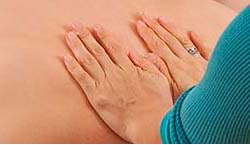
Designing Websites for Alexander Technique Practitioners
This is the Griffen Mill design guide to designing websites for Alexander Technique practitioners, part of our website design guide series. Over the years, the individual designers within Griffen Mill have created websites for many Alexander Technique practitioners, via our key client WebHealer. As one of the therapies that are usually referred to as a complementary treatment, an Alexander Technique website must, in our opinion, convey a professional and health oriented identity, with a warm outlook and yet clinical leaning. The designer must be mindful of the target audience and convey a soft and inviting appeal. Colours tend towards more natural and muted tones with images that involve positive people or of treatments that are offered.
Guide Structure
This guide, like most in this series, has the following key sections.
- Typical design requirements for Alexander Technique websites
- Choosing colour for Alexander Technique websites
- Shape and related aesthetic decisions
- Images and photographs for Alexander Technique websites
This guide continues with section one, and you may use the above links to read more about later sections, which will go into more detail. In each case, the approach used to communicate our ideas leans towards examples, such as examples of images useful for an Alexander Technique website or palettes that often appeal to Alexander Technique practitioners.

Typical design requirements for Alexander Technique websites
Although each Alexander Technique practitioner will have their individual preferences in terms of style, colour palette and imagery, certain common traits appear more often in Alexander Technique website design. Very often, the client is aiming at a professional and clinical appeal, using a calm colour palette that may complement natural tones, such as blue or green. When done well this will help evoke a sense of security and support. The Alexander Technique involves a proven set of principles to educate people on how to lower levels of muscular and mental tension during everyday activities. It is an open, easy and practical method to improve posture, performance and well-being. The website design of an Alexander Technique practitioner must emphasise these key features within its design elements to be effective to its visitors.
When choosing the colour palette, the designer should be mindful of the images used and the tones used within them, so often there will be natural tones to complement. To help with a harmonious colour scheme, the photographs used can involve a composition that includes the range of colours in the palette, or one that emphasises one natural colour that complements the overall scheme e.g. gentle hands.
Finally, shapewise an Alexander Technique website will tend to be more geometric or solid than, say a reflexology website. The designer should be mindful though that a human, inviting and welcoming appeal is important as well as a professional image.